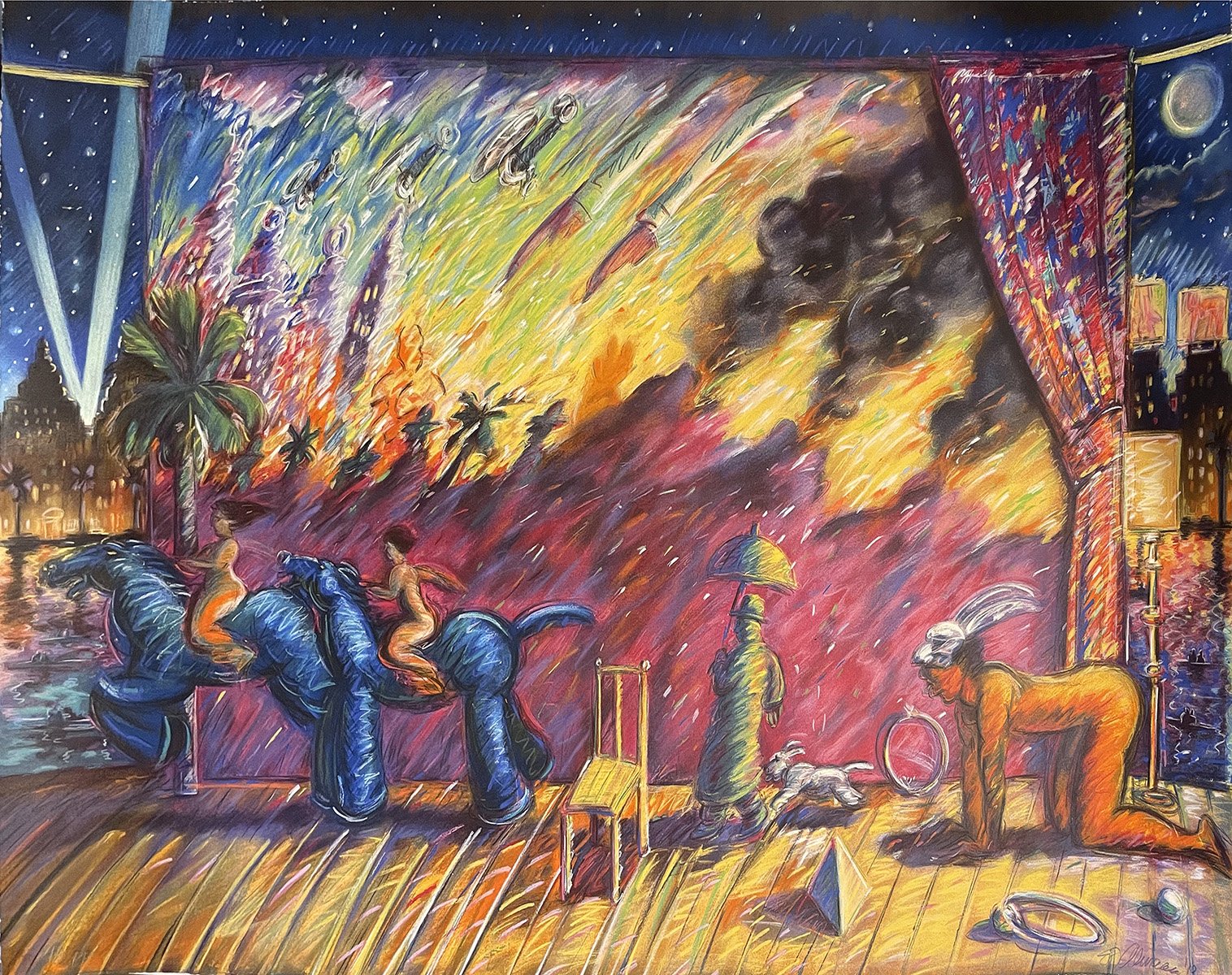Carlos Almaraz
Carlos Almaraz
Biography
Carlos Almaraz (1941–1989) was a pivotal figure in the Chicano art movement, whose paintings, prints, and public murals gave visual form to the struggles and vitality of Mexican American communities in Los Angeles. Born in Mexico City and raised in Southern California, Almaraz pursued art early, eventually earning his MFA from Otis College of Art and Design in 1974.
During the 1970s, Almaraz’s art was inseparable from his political activism. He designed banners and posters in support of César Chávez and the United Farm Workers, aligning his artistic practice with broader social and labor movements. His commitment to social justice was a defining element of his work, giving his art both urgency and relevance.
Almaraz was a founding member of Los Four, alongside Frank Romero, Gilbert Luján, and Roberto de la Rocha. Together, they transformed the Los Angeles landscape with murals that depicted the history, culture, and civil rights struggles of Chicanos. The group’s landmark 1974 exhibition at the Los Angeles County Museum of Art was the first major museum show devoted to Chicano artists, bringing national attention to their vision.
Stylistically, Almaraz is remembered for his bold use of color and expressive forms. His canvases often pulsed with purples, oranges, and pinks, depicting scenes of East Los Angeles, urban freeways, or dreamlike landscapes. His art conveyed a vibrant, restless energy—at once deeply personal and universally resonant. In both prints and paintings, he merged social narrative with lyrical abstraction, creating works that continue to inspire new generations.
Although Almaraz’s life was tragically cut short at the age of 48, his legacy remains profound. His influence on Chicano art is celebrated not only through his murals and prints, but also in the continued recognition of his role in shaping cultural identity. A major retrospective at the Los Angeles County Museum of Art in 2017 reaffirmed his lasting importance as one of the key voices of Chicano and American art in the 20th century.

